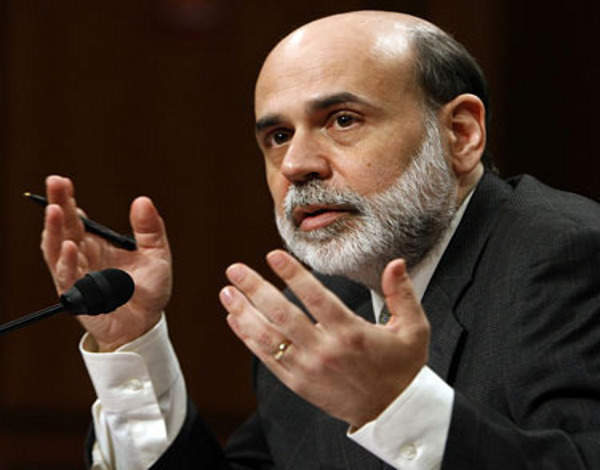

Ben Bernanke pulled back in horror from a 1937-style repeat of Marriner Eccles’ premature emasculation of the economy, in Helicopter Ben’s case from his very own flagship QE policy: the FOMC decided not to taper its $85 billion monthly dose of QE steroids, as previously notified. These steroids were meant to be a shot-in-the-arm for the US economy, whose recovery is stuck very alarmingly in neutral: only 169,000 new jobs in August does not recovery make.
QE is now linked to unemployment – still stuck at 7.3 per cent, despite a record number of job no-hopers conveniently falling off the other end of the escalator. The US has actually lost 347,000 jobs in the past two months. House sales and mortgages, which are linked to 10-year Treasuries whose yield has doubled, have also stalled. The US economy, like the Fed, is backfiring badly and is nowhere near escape velocity.
QE tapering is now to begin when unemployment reaches 7 per cent – but it’s only at 6.5 per cent that the QE tap will be finally turned off and interest rates rise, depending on the reality on the ground, and not these meaningless spin-driven, manipulated, distorted, half-truth figures for unemployment. What has also become clear, however, is that these US steroids went global and are creating lax monetary conditions and consequent asset bubbles from Timbuktu to Chongqing and back again.
Isn’t this where the Global Crunch started? When Ben Bernanke announced in June that tapering would begin in September, he under-estimated the global reaction: horror! Money rushed back to the dollar, and the promise of higher US rates to come, as the yield on two-year Treasuries doubled since May. This bit wasn’t in the Bernanke script.
The Fed watched this global reaction with trepidation, as though they only now realised the global impact of their own printing presses and the consequent need for low interest rates.
IOU
Public debt everywhere is still far too high – the UK is having to borrow £115.7 billion this year and cannot afford higher interest payments; nor are the markets ready to fund public debt which is out of control in most of the G20; bank balance sheets are stuffed with bonds, and rising rates would trigger losses, and another banking crisis; that would have led to withdrawals of their special deposits earning just 0.25 per cent, and rocked the Fed itself; and there lurks the threat to emerging markets and another Asian currency crisis. Luckily for the Fed, inflation remains subdued – if you believe government figures.
The real error is that the Bernanke thought QE would rescue the real economy, but buying existing bonds and mortgages does not add a bean to aggregate demand, and it is consumer demand, buried under old debts and slowing real wages, which is the missing spark to re-ignite the US economy. And the obvious cure is tax reductions, but that means more debt, or actual or mandated cuts.
Unfortunately, it’s still stalemate-time again on Democrat tax increases versus Republican expenditure cuts on Capitol Hill. And worse still, it’s time this month to settle the acrimonious issue of the budget and the US Total Debt Ceiling … Obama is the man stuck inside the shrinking Economic White House, and the Republicans are loving every minute of it – sweet revenge for having lost the White House twice running.
The central bankers are, once again, in danger of losing control of interest rates and monetary policy, and somewhat bizarrely QE seems to be the new 600-lbs gorilla in the bankers’ parlour, which is now threatening to control them. As I said last week, printing QE largesse is easy, but stopping it is unchartered territory, for which there is no arithmetic.
Is this the new Big Black Hole in Professor Bernanke’s post-retirement thesis – ‘How I Single-handedly Saved the Global Economy with My Printing-press’? Ending QE is no laughing matter… Just try asking the record 20.2 per cent of US households stuck on food stamps.






